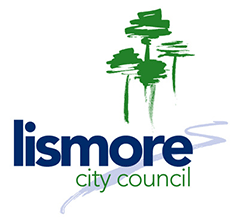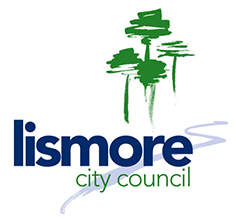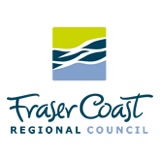Cover Page
-
Trade Waste Inspection
-
Business name
-
Address
-
Contact Name
-
Contact #
-
Inspection Date
1. Complete Before Inspection
-
Application ID:
-
Is property currently being charged for trade waste (P&R)?
-
Number of toilets installed (Separate/Communal) (P&R)?
-
Determine any outstanding issues (Database)
2. Complete Before Inspection
-
Introduction to Owner/Manager. Explain what Trade Waste is and drivers for increasing Trade Waste focus i.e: extra load on treatment plants, environmental impacts & ensuring that all businesses generating waste water from business practices are required to hold an approval.
-
Current Certificate Sited
-
Is the premises is discharging trade waste? (If not cease inspection)
-
Ensure Trade Waste Form/Database is correct and complete incomplete parts or provide a new form
-
Nature of trade waste (e.g. Grease oils, chemicals, temperature)
-
Other activities that use water around premises
- None
- Gardening
- Water use in product
- Food Waste Disposal Units
-
Any open areas that collect rainwater to sewer (e.g. Wash down areas)
-
Discuss Site Plans/Drawings
-
Attach photo of site plan
-
Confirm number toilets installed (Separate/Communal)
-
Ensure taps have back flow prevention
-
Pre-treatment device?
-
Photograph Pre-Treatment Device
-
Attach Photo
-
Pre-Treatment Device Type
-
Pre-Treatment Device Size
-
Pre-Treatment Device Condition:
-
Contractor:
-
Frequency of Service/Pump-out:
-
Last Pump-out:
-
Go through Cleaner Production Checklist with Operator
-
Recommend the operator/owner supervise the pumping out of pre-treatment facility to ensure walls are cleaned and trap left in good condition and re-filled with clean water
-
Advise operator/owner if there will be follow up inspections
-
Sketch plans or describe location of pre-treatment device in relation to building
Plumbing Fixtures & Pre-Treatment Devices on Site
-
Commercial Food Outlet - If Applicable?
-
Commercial Fixtures?
-
Enter Count for Each
-
Floor Waste Basket Traps
-
Fixed Mesh Screens
-
Dry basket Arrestors
-
Commercial Kitchen Sink (140L)
-
Double Bowl or Pot Sink (280L)
-
Basin (30L)
-
Water Heated Baine Marie (40L)
-
Dishwashers - If Applicable?
-
Enter Count for Each
-
Small Under Bench (400L)
-
Medium Under Upright (800L)
-
Large - More than One Outlet (1200L)
-
Potato Peelers - If Applicable?
-
Enter Count for Each
-
Small Bench (100L)
-
Medium Upright (200L)
-
Large (400L)
-
Steamer/Hydrotherm/Boiling (100L)
-
Pots/Stock Pots - If Applicable?
-
Enter Count for Each
-
Wok Burners (140L)
-
Mixing Bowls (140L)
-
Glass Washers not in Liquor Sales Area (200L)
-
Additional Fixtures or Equipment
Plumbing Fixtures & Pre-Treatment Devices on Site - Page 2
-
Automotive/Engineering Industry - If Applicable?
-
Fixtures & Equipment
-
Dry Basket Arrestor/Bucket Trap with 6-8mm holes
-
Holding Tank/Pump Well & Oil Arrestor
- 250L
- 550L
- 1000L
- 1500L
- 2000L
- Other
-
Other Volume in Litres
-
Separator in L Per/Hr
-
Additional Fixtures or Equipment
-
Other Commercial/Service Industries - If Applicable?
-
Fixtures & Equipment
-
Fixed Screens
-
Plaster Arrestors
-
Solids Sediment Pit - Record Volume in Litres
-
Bottle Traps
-
Dry Basket Pit
-
Lint Screen
-
Cooling Pit
-
Sediment and Neutralising Trap
-
Balancing Tank after Silver Recovery
-
Additional Fixtures or Equipment
Additional Notes
-
Additional Notes?
-
Notes
Cleaner Production Information
-
Eliminate --> Reduce --> Reuse --> Recycle --> Treatment/Disposal
-
The goal of Cleaner Production is to prevent pollution without reducing your businesses production capacity. When adopting a cleaner production philosophy, try to consider how wastes were created rather than how they can be treated
-
Cleaner production can lead to significant cost savings for your business by saving money by:
-
1. Reducing or eliminating wasted raw material
-
2. Reducing water and energy consumption
-
3. Reducing or eliminating liquid and solid waste disposal costs
Cleaner Production
-
Opportunity for reducing cost
-
Are solid particles, oil and grease scraped from kitchenware prior to washing?
-
Are dry cleaning methods used before final wet cleaning?
-
Are quick break detergents/degreasers used?
-
Are strainers used to prevent food scraps entering the grease arrestor?
-
Is the used oil recycled?
-
Are employees trained and aware of waste minimisation goals and principles of clean production?
-
Are floors cleaned with a broom, rather than a hose?
-
Have any water saving products in use or planned to be installed (eg. trigger nozzles)?
-
Wait before washer is full before doing dishwashing
-
Employees are aware of water conservation techniques in the business? (egs. (1) using visual cues – charts and graphs – to explain water saving goals (2) adding water conservation topic to staff meetings)
-
Water conservation techniques in the garden – none between 10am and 2pm – or in windy conditions. Also has the business considered using grey water for the garden (legislation pending)









